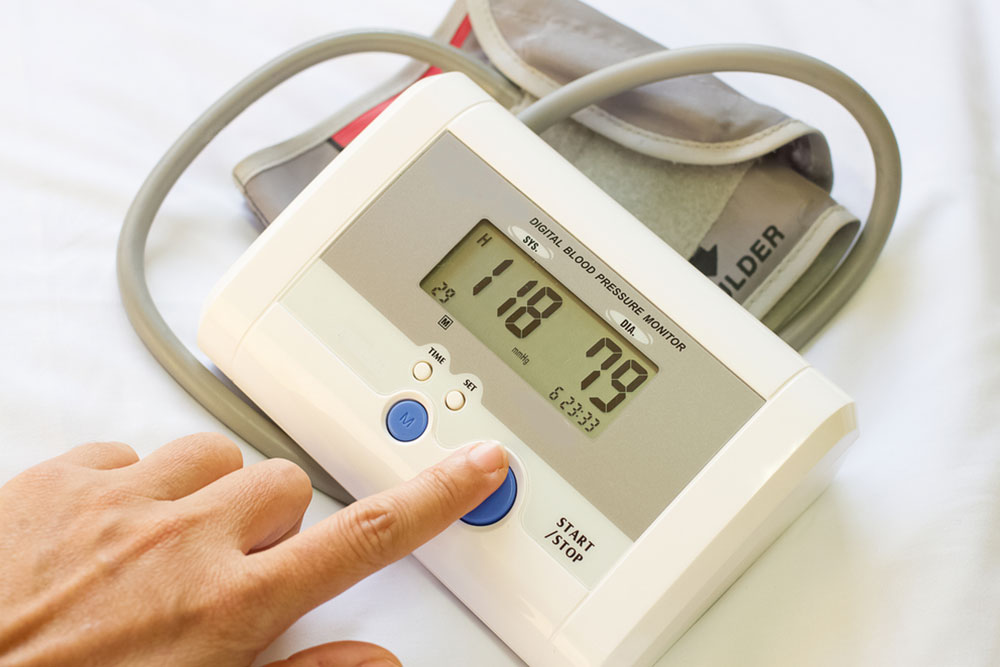Here’s How You Can Lower Your A1C Levels

A1C level is a measurement used to indicate your blood sugar levels. It is vital to have your blood tested regularly to determine your A1C levels and check if you have diabetes. Even if you don’t have diabetes, you should try to keep your blood sugar levels in control.
What is A1C level?
When sugar enters the bloodstream, it attaches itself to a protein called hemoglobin that is present in your red blood cells. This sugar-bound protein is known as glycated hemoglobin. The higher the amount of such hemoglobin in your blood, the higher your blood sugar levels will be.
A1C tests are conducted to gauge your blood sugar levels over the past three months, to get an idea of your sugar level fluctuations. Hemoglobin cells live for about three to four months, so A1C levels give a good picture of your glucose level in the bloodstream for that period.
What is the optimal A1C level?
A1C levels are referred to in percentages. For a nondiabetic patient, the A1C level should preferably be less than 5.7%. Anything between 5.7% and 6.4% indicates prediabetes. An A1C level of 6.5% and above means that the patient has diabetes. For a person with diabetes, the target is to bring the A1C level below 7%.
With lower A1C levels, one can keep a check on the progression of diabetes as well as its associated complications in control. Eye diseases, kidney, nerve, and cardiovascular diseases are the risks associated with diabetes. By putting in some effort to manage your blood sugar level, you can reduce the risk of diabetes.
Monitoring and managing blood sugar levels
One needs to get their A1C tests tested every three months to accurately track their blood glucose levels. Follow the doctor’s prescriptions and instructions carefully. Be active and exercise for at least 30 minutes each day, to lower your A1C levels. Take your medicines on schedule, and stick to a sugar-free diet as much as possible.
Follow a healthy diet plan, and eat small portions every two to three hours. Spread your carbohydrate intake over all your meals, and don’t consume too much of it in one meal.
Physical activity
Go for a walk each morning. Plan your workouts. If your weight is over your ideal goal, you should set targets to drop a few pounds. You can take yoga and meditation classes to keep fit and avoid stress. Keep yourself active, at home and work.
When you have diabetes, you must not choose any drastic weight loss plans, like fasting. Consult your doctor and dietician and draw up a diet that will help you lose weight gradually. Your workout routine and meal plans should not put you in danger of hypoglycemia or low blood sugar level.
Food selection for lower A1C levels
Select foods that have a low glycemic index (GI). The GI indicates how fast or slow the food is digested to release the glucose present in it.
Avoid processed foods, polished grains, and refined sugars. These have a high glycemic index and cause a sharp increase in sugar levels. Stick to whole grains, vegetables, legumes, nuts, and berries.
Vegetables and legumes
A study in Japan conducted on a group of 417 men showed that consuming one cup of assorted vegetables and a half cup of green vegetables helped lower A1C levels significantly. Another controlled study demonstrated the benefits of consuming legumes.
These foods are rich in fiber, and they also contain a lot of proteins. Proteins are vital nutrients, and they take a long time to digest.
Fiber is not easy to digest, and it takes a long time to pass through your digestive system. Soluble fiber binds with liquid in your intestines and slows down the digestion process. Thus, soluble fiber helps the body absorb nutrients effectively, and keeps you satiated for a long time.
High fiber food also provides other benefits. Bacteria in the digestive system ferment the fiber, which helps in the production of a gut hormone called GLP-1. This hormone helps increase insulin production, which is helpful in controlling blood sugar levels.
Berries
Berries have a low glycemic index. They are rich in fiber and full of vitamins and antioxidants. They also contain vital minerals like manganese. Berries are good to eat and can satisfy your cravings for sweets without causing your sugar levels to shoot up.
Brown rice
White rice is a polished grain, and in the process of polishing, it loses most of its nutrients and all its fiber content. Brown rice, on the other hand, is coarsely ground which means that it still retains fiber content and a lot of nutrients.
Kale
Kale is a fiber-rich food, and it also has a low glycemic index (GI). Like all other leafy vegetables, it is high in several vitamins and minerals that keep your body healthy. So, diabetic patients should not just include kale, but also a lot of other leafy vegetables in their diet.
Eggs
Eggs are rich in saturated fats. They are also one of the best sources of protein, and a protein-rich diet can help in managing glucose levels in type 2 diabetes.
Nuts, chia seeds, and flax seeds
All these have high fiber content, a low GI, and are also a source of many essential nutrients. Flax seeds are especially useful in diabetes management. A study demonstrated how lignans, a plant compound found in large amounts in flax seeds, can help lower A1C levels. Grind flax seeds and consume them so that they are easy to digest.
Garlic, turmeric, and cinnamon
These foods, apart from adding rich flavor to any dish, can also control sugar levels in the body. So, the next time you got out, you can eat a dish spiced up with these ingredients without any guilt.
To lower your A1C levels, you need to manage your diabetes according to the advice given by your doctor.
There are many ways to manage your blood sugar levels. Exercise, staying active, taking your medicines on time, and sticking to a good diet, can help you lower your A1C levels, thus ensuring that you lead a normal and healthy life.



